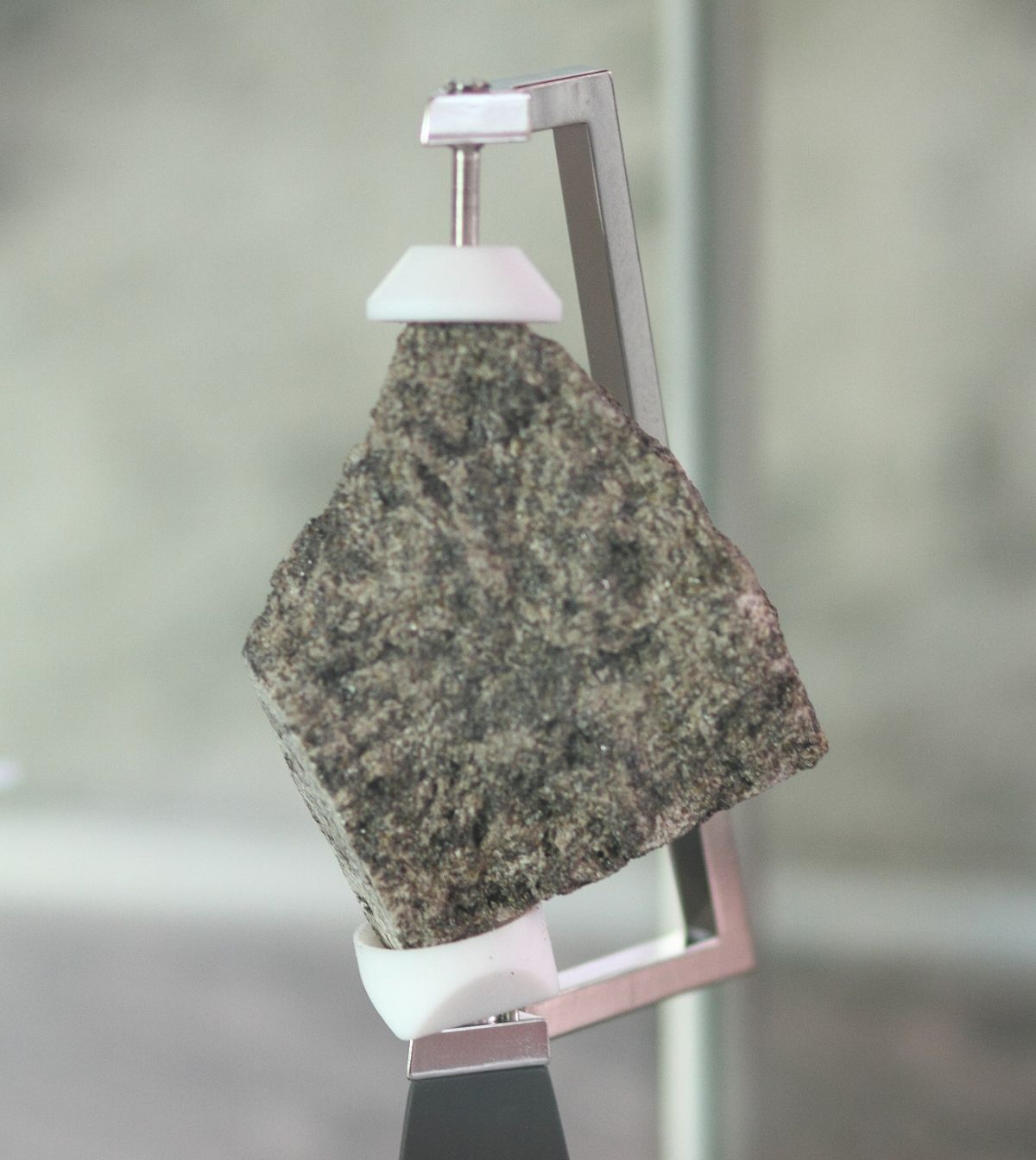Many myths tell a lunar origin story. Even today, we look for the man in the Moon. And, of course, there’s the popular joke: that the Moon is made of cheese.
Scientists tend to accept a different theory. Four and a half billion years ago, a Mars-sized planet called Theia collided with Earth. The collision flung up debris that eventually coalesced into the Moon.
Impact theory helps explain why Moon rocks look so similar to stones here on Earth. In fact, if you stumbled across a lunar meteorite, you might never know! Moon rocks are usually gray. Some look like a chunk of concrete. Others are breccia, which is stone made of rock pieces melded together.
But if these pebbles look like terrestrial pebbles, how can we tell a Moon rock is, well, from the Moon? One way is through texture: because the Moon has almost no atmosphere, it’s constantly bombarded by space debris, which pockmarks Moon rocks on impact. And with no wind or water on the lunar surface, Moon rocks almost never rust or turn to clay.
What kind of rock is it? Sedimentary rocks that are formed by wind- or waterborne particle accumulation can’t come from the Moon.
If you still think you have a Moon rock, take it to some scientists. They’ll tell you the elemental compounds of your stone; certain kinds of elements and minerals abound on the Moon, while others are found only on Earth. Further scientific analysis can show if your rock was exposed to solar wind damage, as Moon rocks are.
And you can rest assured: the moon isn’t actually made of cheese, nor are its rocks.









